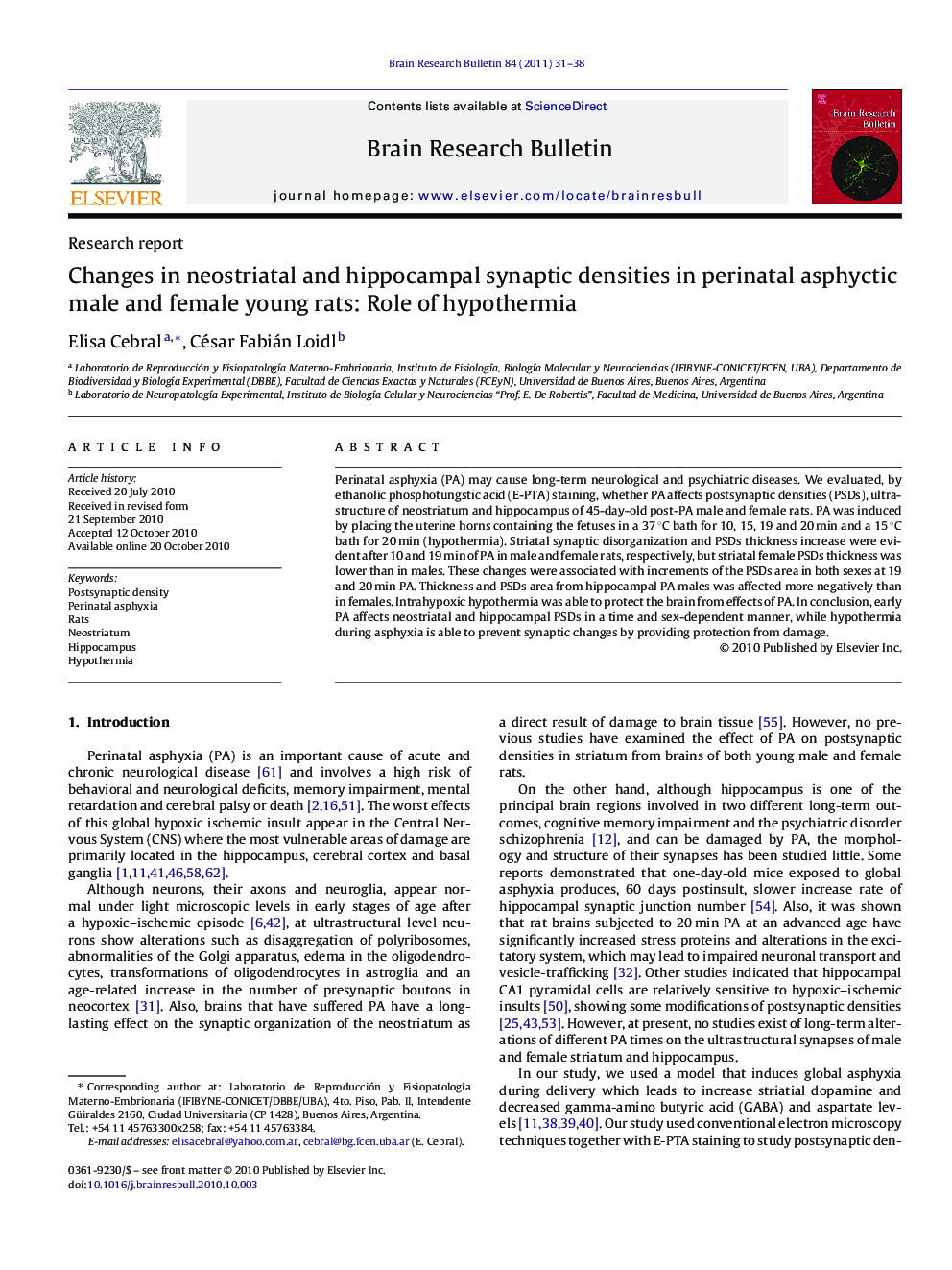| Article ID | Journal | Published Year | Pages | File Type |
|---|---|---|---|---|
| 4319225 | Brain Research Bulletin | 2011 | 8 Pages |
Perinatal asphyxia (PA) may cause long-term neurological and psychiatric diseases. We evaluated, by ethanolic phosphotungstic acid (E-PTA) staining, whether PA affects postsynaptic densities (PSDs), ultrastructure of neostriatum and hippocampus of 45-day-old post-PA male and female rats. PA was induced by placing the uterine horns containing the fetuses in a 37 °C bath for 10, 15, 19 and 20 min and a 15 °C bath for 20 min (hypothermia). Striatal synaptic disorganization and PSDs thickness increase were evident after 10 and 19 min of PA in male and female rats, respectively, but striatal female PSDs thickness was lower than in males. These changes were associated with increments of the PSDs area in both sexes at 19 and 20 min PA. Thickness and PSDs area from hippocampal PA males was affected more negatively than in females. Intrahypoxic hypothermia was able to protect the brain from effects of PA. In conclusion, early PA affects neostriatal and hippocampal PSDs in a time and sex-dependent manner, while hypothermia during asphyxia is able to prevent synaptic changes by providing protection from damage.
